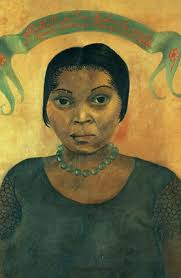Flashback Friday: Frida and Eva.
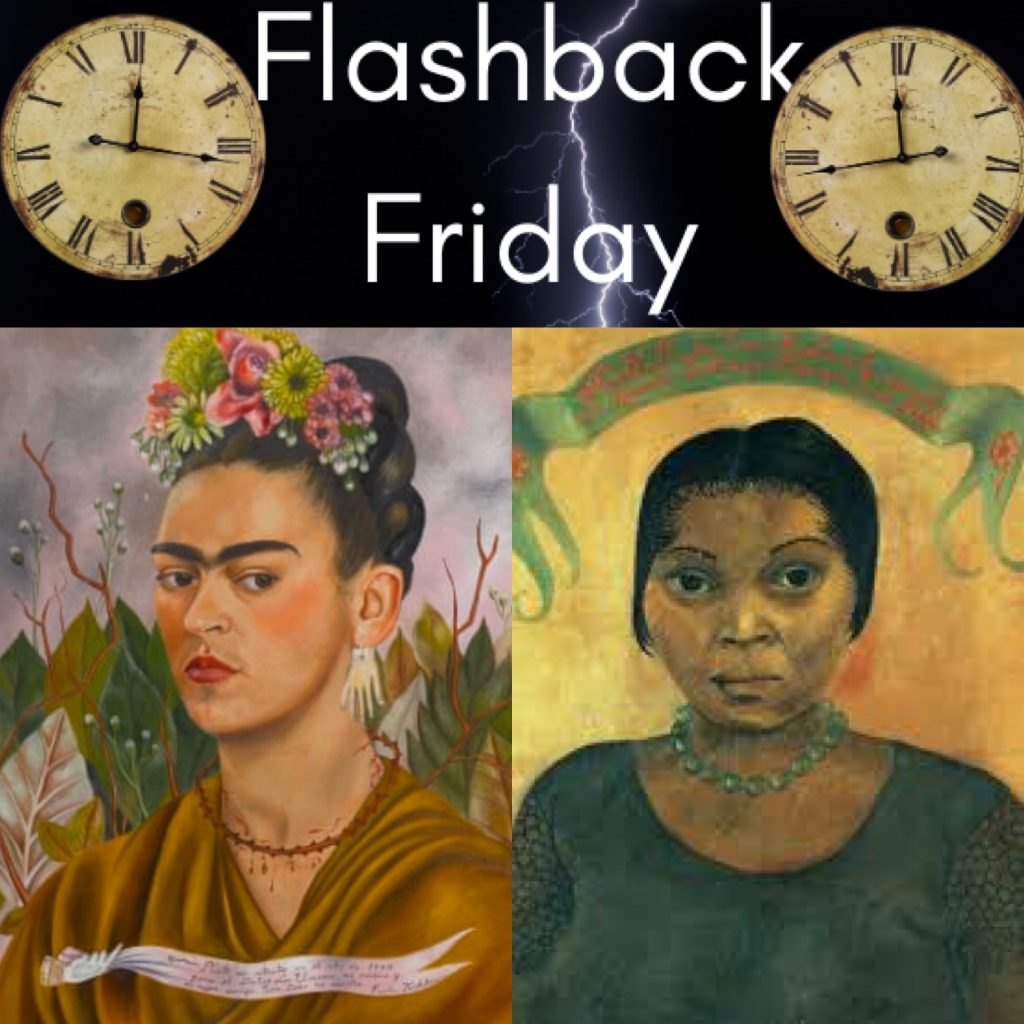
Last week, I finished the audio version of the lovely and informative Frida in America: The Creative Awakening of a Great Artist by Celia Stahr.
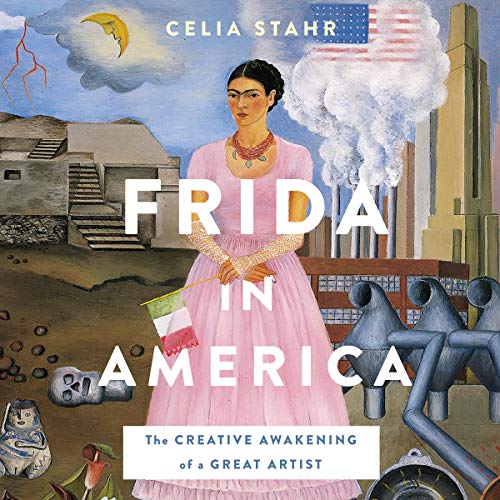
The book’s page at MacMillan, its publisher, provides this summary:
Mexican artist Frida Kahlo adored adventure. In November, 1930, she was thrilled to realize her dream of traveling to the United States to live in San Francisco, Detroit, and New York. Still, leaving her family and her country for the first time was monumental.
Only twenty-three and newly married to the already world-famous forty-three-year-old Diego Rivera, she was at a crossroads in her life and this new place, one filled with magnificent beauty, horrific poverty, racial tension, anti-Semitism, ethnic diversity, bland Midwestern food, and a thriving music scene, pushed Frida in unexpected directions. Shifts in her style of painting began to appear, cracks in her marriage widened, and tragedy struck, twice while she was living in Detroit.
Frida in America is the first in-depth biography of these formative years spent in Gringolandia, a place Frida couldn’t always understand. But it’s precisely her feelings of being a stranger in a strange land that fueled her creative passions and an even stronger sense of Mexican identity. With vivid detail, Frida in America recreates the pivotal journey that made Senora Rivera the world famous Frida Kahlo.
I want to focus on Frida’s portraits of an African American woman named Eva Frederick done while she was staying in San Francisco. I was unfamiliar with these works, and I’m a big fan of Frida. The book goes into detail as to why Frida’s depiction of Eva as an actual woman- as opposed to a stereotype of a hypersexualized Jezebel or a sexless Mammy– was such a big deal. From Frida in America:
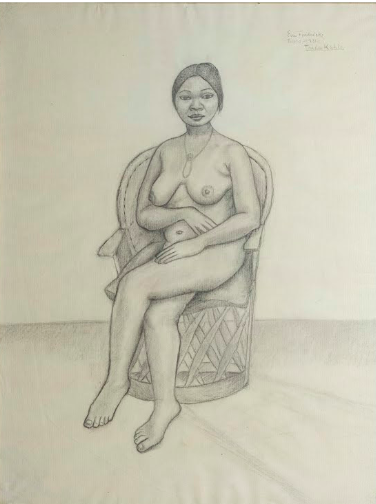
[S]he created a drawing of Eva Frederick, an African American woman she said had modeled for Diego. Most likely they met Eva through local photographer Imogen Cunningham, who photographed her. Frida invited Eva into her studio to be sketched and had her pose nude, seated on the equipal.
Both as an artist and as a sometime model, Frida understood the importance of making her sitters feel comfortable, especially if they were posing nude. Sometimes Frida would pull out a guitar Dr. Eloesser had given her and sing Mexican songs in a raspy voice, filling the room with the vibrant and warm energy of her home. The Mexican equipal chair also reminded Frida of home and in the drawing, it’s the only obvious indicator of place.
Eva sits up tall in the chair, her eyes looking off to the right as if in a daydream. What’s on her mind? There are few clues. Besides the equipal, the only other object in the drawing is a long chain necklace, most likely one that belonged to Frida.
…
The jewelry adds to Eva’s striking good looks. She sits with crossed legs, her left hand covering her pubic area. It recalls the modest Venus pose, something Botticelli used in his painting The Birth of Venus, a work Frida knew quite well. The classically inspired standing Venus places one hand, entwined with her long hair, over her pubic area and one over her breasts.
In Frida’s version, a seated Eva covers her pubic area but not her breasts, as if to convey both modesty and an ease with her body. The faraway look in Eva’s eyes also echoes Botticelli’s Venus, who possesses a similar look. With these similarities, Frida hints that Eva is a black Venus, a beautiful Afro-Mexican woman.
Given the common stereotypes of the period, such as African Americans depicted as hypersexualized, Frida’s representation stands out. African American women were typically characterized as “Jezebels,” femmes fatales, or asexual mammies, and these stereotypical images were exported to Mexico.
Although people of African descent were present in Mexico due to the slave trade, “Mexican intellectuals ‘whitened’ the imagined Mexican, simultaneously writing Africans out of Mexico’s history,” says historian Galadriel Mehera Gerardo. By and large, darker-skinned Mexicans were seen as mestizos rather than Afro-Mexican.
Frida would have been exposed to attitudes toward black people both in Mexico and in the United States. Her cross-cultural vantage point comes through in her creative choices: she places an African American woman in a Mexican equipal and has her wear a Tehuana necklace.
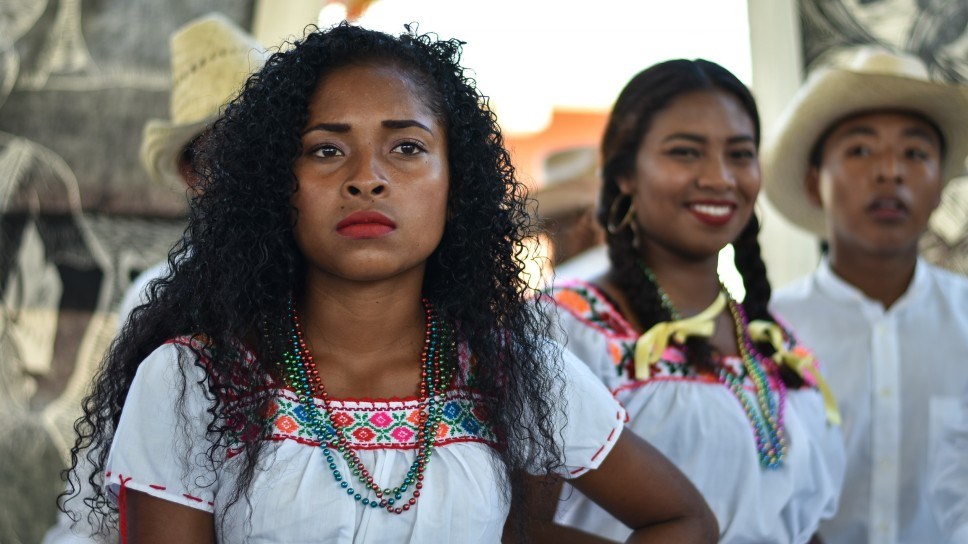
The book also discusses Frida’s other work of Eva- a painted portrait done using oil paint, and so much, much, much more. You can purchase Frida in America here.
